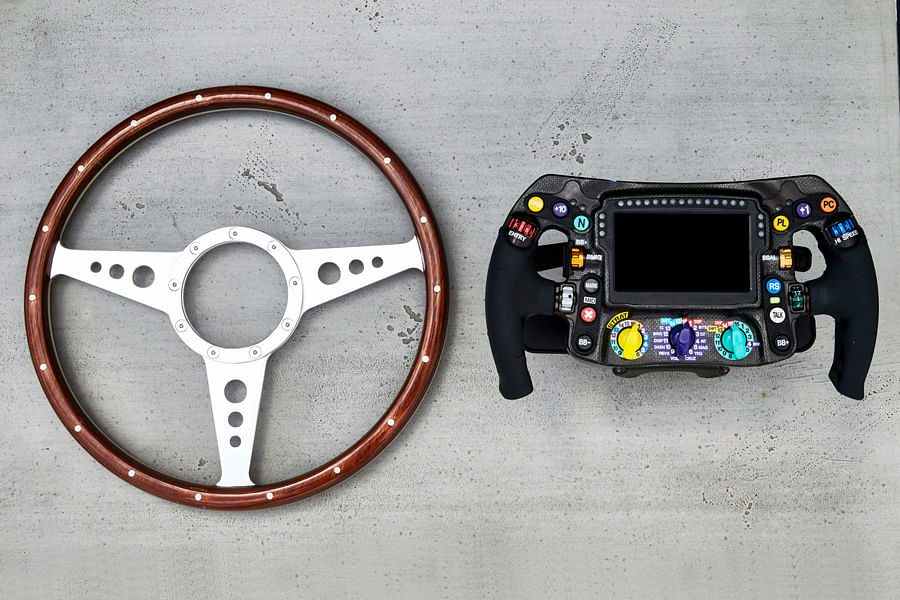
What does a steering wheel do? It is used to control the direction the car is going, with the addition of the horn button. These days, they may house the airbag and audio controls as well.
That’s as far as the car in your driveway goes. But let’s take a Formula 1 car instead: The steering wheel does a lot more than letting the driver change the direction the car is going. Firstly, a modern F1 car’s steering wheel is not round, but more rectangular in shape. So, it sounds slightly ironic to call it a wheel. But there is a reason today’s F1 steering wheels are rectangular. The steering column does not rotate more than three quarters of a turn and round-shaped wheels are therefore not necessary. There are slots on either side of the wheel where the driver can hold it and that is about it.
One look at a modern F1 car’s steering wheel is enough to be wonderstruck. Firstly, the gear upshift and downshift levers are located at the back of the steering wheel. The front is rather complicated and has several knobs, switches, displays and buttons. The driver can control a lot of parameters of the car, from adjusting brake force distribution to having an energy drink being squirted into the mouth. Some of the other vital car controls located on the steering wheel are engine mapping, brake bias, differential settings, radio, traction control, pit lane speed limiter, rain light, hand clutch, and gearbox neutral button.
Controls on the steering wheel change every season and according to the latest rules of the current season. For example, traction control, which prevented wheels from spinning at the start, was banned in 2008 and a button is obviously not required anymore.
One would wonder if the driver spends time driving or adjusting knobs and switches. The answer is simple. The modern F1 car steering wheel is the interface between the driver and car. To ensure smooth running of the car and to make urgent adjustments, the driver has to know what each and every switch or knob does. He or she has to do it even at break-neck speeds. To do this, he or she has to learn the positioning of the buttons, switches and knobs at the beginning of the year when the team introduces a new one.
When the Formula 1 championship started in 1950, the cars were built for brute power with no electronics. The steering wheel too was just a ‘wheel’. They were big and aided quick turning with less effort. In other words, they were just like street car steering wheels without the horn button.
Over the 1960s and 70s, car cockpits began to shrink and this necessitated smaller steering wheels. Paddle shifters to change gear, paddle clutch and such other features began to be moved to the back of the steering wheel so that the driver had these controls at his fingers.
Some of the first buttons to be placed on the front of the wheel were the gear neutral button (to put the gearbox in neutral to move the car in case of a spin or failure) and audio button to talk to the team.
The most recent additions to the steering wheel are the controls for the Energy Recovery System (ERS) and Drag Reduction System (DRS).
These steering wheels also have a small LCD screen that displays care parameters and there is also an indicator that tells the driver when to shift gear for optimum performance.
An F1 car’s steering wheel can be removed and the driver can get in or out of the car only when it is not attached.
With inputs from formula1.com